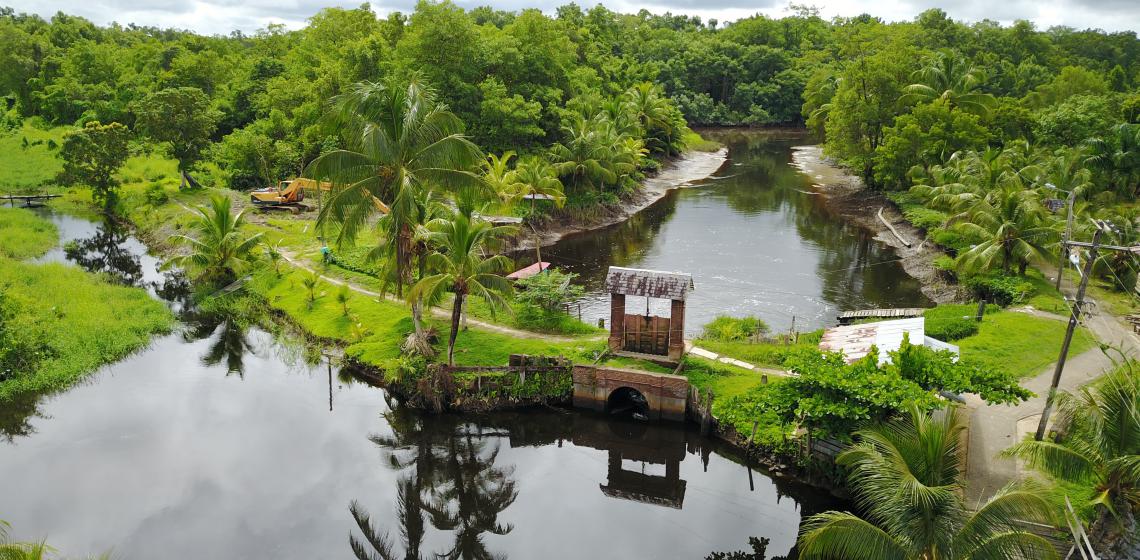
Plantage Reynsdorp (Bakkie) is a former coffee plantation (1744) with old locks and buildings. The plantation was divided around 1900 under old, mainly Javanese, contracts. Bakkie is the last inhabited plantation on the right bank of the Commewijne River.
The Bakkie Museum has one of the most unique collections in Suriname with many original books, prints and objects, like the original journals of J.G. Stedman 1799, the picture book of Benoit 1823, a Blaeu map of 1630, payments for abolition of slavery in 1863, a branding iron, crooked buoy, a West Indian Company (WIC) chocolate mold, a referral from Dr. Sophie Redmond and a coloured picture by Maria Sibylla Merian 1719. The garden at Bakkie is particularly special. In 1755 Daniel Rolander (one of the Apostles of Linneaus) visited this area and described the date palm from Senegal, found at Bakkie and still there. The Kwasibita (named after Medicine Granman Quassie), and edible flowers from Malaysia can be found, with other plants, on the trail.
Bakkie is back in development, Marsha Mormon (born in Renkum, the Netherlands) came in 2006 to find her roots on this plantation and decided to stay there. After research, Marsha realized she is heir to a large part of the plantation Reynsfort. She found everything in the Warappa creek run down, the parwa forest had taken back the area. Since then, she and her husband have done a lot of work on the plantation where her ancestors came from. This included to restore the foreland and the buildings. For example, a timber shed has been reconstructed, this is now the new restaurant.
The silted creek of almost 10km is excavated by them again. During the digging a lot has been found and now to be seen in the Museum in Bakkie. The creek had been increasingly abandoned since the abolition of slavery and then clogged. This unique situation has ensured that nature has been able to take its course. A number of remains of the plantation have been preserved, such as a sugar factory from 1830. This is very complete and unique with a sugar cane press, two steam engines and steam boilers. There are also more remnants from the plantation past such as a steam car, locks, graves and an old camel bridge. The old ring dams are still visible where poisonous cacti were planted against run-off slaves.
In 2014 Marsha was on the Dutch NOS 8 o'clock news as an example of success of conservation heritage. Bakkie has also featured in one of the largest Dutch newspapers, NRC.
Thanks to Marsha’s perseverance, the area is now accessible and visible to the general public. Day trips by boat to the Plantation are offered from the capital Paramaribo. Part of the proceeds is for the preservation and development of this unique project.
